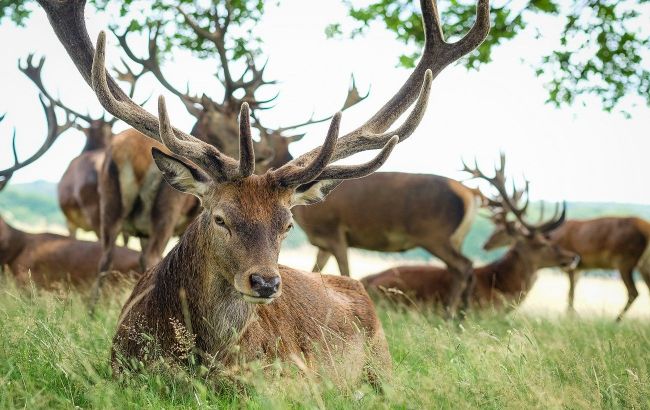How tourists can stay safe when encountering wild animals
 Advice for people on how to survive after encountering wildlife predators (photo: freepik.com)
Advice for people on how to survive after encountering wildlife predators (photo: freepik.com)
You may encounter wild animals in your garden, during a hike, on the water, or while traveling. Although animal attacks are rare, your actions can either provoke or prevent such incidents.
Bears
If you find yourself in a situation where you encounter a bear, it's crucial to know how to act to avoid danger. Your actions can significantly influence the outcome of a meeting with a wild animal.
What to do if you see a bear:
- Stay in place or slowly back away to the side. Do not run, shout, or climb a tree, as bears can climb.
- Try to appear larger: slowly wave your arms and speak calmly so the bear understands you are a human
In case of aggression from the bear:
- If a grizzly bear attacks, play dead: lie face down, and keep your backpack on for protection.
- If a black bear attacks, do not play dead. Try to escape or defend yourself by striking the bear's face.
Prevention:
- Make noise while walking in areas where bears may live.
- Avoid areas with berry bushes that wild animals feed on.
- Keep your food and garbage securely stored.
- Travel in small groups.
These tips can help you stay safe and avoid conflicts with wild animals while in nature.
Moose
If you find yourself near a moose, it's important to know how to act to avoid a dangerous situation. Moose can be unpredictable, so caution is necessary.
What to do if you see a moose:
- Do not approach the animal or attempt to feed it. If traveling with a dog, always keep it on a tight leash.
- Make noise if you are in a moose habitat, and if you spot one, slowly retreat while speaking calmly to avoid startling it with sudden gestures or words.
If a moose attacks:
- Try to hide behind a tree or another large object.
- If there is a car or building nearby, take shelter inside.
- If a moose knocks you down, curl up into a ball, protect your head, and remain still until the animal leaves.
For prevention, always keep your distance from these large horned animals to avoid possible attacks.
Snakes
If you encounter a snake, it's essential to know how to behave to avoid danger.
What to do if you see a snake:
- Do not provoke the snake. Snakes usually do not attack unless disturbed. Give them space and leave them alone when outside.
- If the snake is in your home. Evacuate the room, close the door, seal any gaps with a towel, and contact professionals for help.
If a snake bites you:
- If you’re unsure whether the snake was venomous, do not apply a tourniquet or try to suck out the venom. Stay calm, sit or lie still while waiting for help.
- Take a photo of the snake from a safe distance. This will help experts identify whether the snake was venomous, which can greatly aid in treatment.
- While waiting for help, treat the wound, cover it with a clean bandage, and if possible, mark the edge of the affected area on the skin, noting the time.
Prevention:
- Do not touch a snake, even if it appears to be dead.
- Wear thick boots and long pants if you are in areas where snakes are present.
- Use a long stick to check the path ahead of you.
These simple tips can help you handle encounters with snakes safely and avoid dangerous situations.
Earlier, we published an article on the real sea monsters of our world — four animals whose existence is hard to believe.
Additionally, a list was released of the top five animals that prefer to stay in the shadows — the true introverts of the wild.
Sources: National Geographic and Wikipedia.

